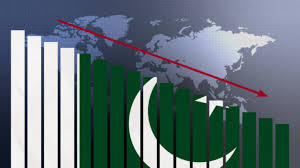Pakistan’s budget performance for the fiscal year ended June 30, 2025 shows its lowest fiscal deficit in nearly a decade. The deficit contracted to approximately 5.38% of GDP, significantly below the previous year’s 6.8%, marking a welcome shift in the nation’s fiscal trajectory. This improvement exceeded both government and IMF expectations.
1. Revenue Growth Outpaces Spending
- Revenues climbed 36% year-on-year, while overall expenditures rose only 18%, highlighting disciplined spending behavior.
- Tax revenues grew by 26%, and non-tax revenues surged 66%, largely due to a Rs2.62 trillion dividend from the State Bank of Pakistan up sharply from the prior year.
- Collectively, revenues rose from around 12.5% of GDP in FY2024 to 15.7% in FY2025.
2. Primary Surplus Signals Fiscal Discipline
- Pakistan posted a primary surplus of Rs2.72 trillion, equivalent to 2.4% of GDP, compared to a modest primary surplus of 0.9% the previous year.
- This indicates that even before accounting for debt-service costs, the government’s revenues comfortably outpaced non-interest expenditures a major shift from deficit dependency.
3. Breakdown of Spending and Financing
- Fiscal expenditures totaled approximately Rs24.16 trillion (19.0% of GDP), up from Rs20.47 trillion (19.3% of GDP) in FY24.
- Major allocations included pensions, subsidies, and grants, however the growth in spending remained moderate relative to revenue gains.
- The deficit was financed primarily through domestic borrowing of Rs982 billion, with minimal external borrowing recorded a reversal from prior years’ reliance on foreign financing.
4. Institutional Progress and Tax Base Expansion
- Active taxpayer numbers rose sharply to 7.3 million by July 2025, up from about 5.8 million a year earlier, helping raise the tax-to-GDP ratio to over 11%, the highest in seven years.
- FBR reform efforts, including enforcement mechanisms targeting cash transactions and broadening of services tax base, contributed to stronger compliance and collections.
5. Broader Economic Context and Reform Strategy
- These fiscal improvements align with the government’s “Uraan Pakistan” economic transformation plan, targeting long-term deficit reduction, export-led growth, and fiscal stability.
- While FY26’s budget aims to cut the deficit further to 3.9% of GDP, analysts view this as optimistic and contingent on continued revenue reforms and economic performance.
- The budget also projected 4.2% GDP growth for 2025–26, although structural challenges remain in agriculture and manufacturing.
6. Outlook: Sustainability and Risk
- The payoff from disciplined revenue mobilization and controlled spending provides temporary fiscal breathing room, yet sustainability hinges on structural reforms.
- Maintaining the primary surplus will require consistent tax compliance efforts, digital invoicing enforcement, and rationalized subsidy frameworks.
- The gradual reduction of interest payments and subsidy burdens can support further fiscal consolidation in coming years.
Summary Table
| Indicator | FY2025 Outcome | FY2024 for Comparison |
|---|---|---|
| Fiscal Deficit (% of GDP) | ~5.38% | ~6.8% |
| Revenue Growth (YoY) | ~36% | — |
| Primary Surplus (% of GDP) | ~2.4% | ~0.9% |
| Tax‑to‑GDP Ratio | ~11.3% | ~12.5% |
Conclusion
Pakistan’s fiscal performance in FY2025 demonstrates that focused revenue enhancement and controlled expenditures can markedly improve public finances, even amidst macroeconomic strain. With steps such as expanding the tax base, improving non-tax income channels, and reining in debt servicing, the government has set a foundation for greater fiscal resilience. However, continued structural reforms and private-sector growth will be vital to build on this hard-won momentum and achieve lasting fiscal stability.



Comments (0)
No comments yet. Be the first to comment!
Leave a Comment